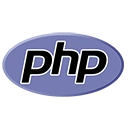Object-Oriented Programming (OOP) is a powerful and widely-used programming paradigm in PHP. In this guide, we'll provide an in-depth overview of OOP principles, class and object creation, encapsulation, inheritance, polymorphism, and best practices. Understanding OOP is essential for building scalable and maintainable web applications and software systems.
1. Introduction to Object-Oriented Programming (OOP)
Let's start by understanding the fundamental concepts of OOP and its significance in modern software development.
2. Key OOP Concepts
Learn about core OOP concepts, including classes, objects, attributes (properties), methods, and the principles of encapsulation, inheritance, and polymorphism.
3. Creating Classes and Objects
Explore how to create classes in PHP, define attributes, and create objects (instances) of those classes.
class Person {
public $name;
public $age;
public function sayHello() {
echo 'Hello, my name is ' . $this->name . ' and I am ' . $this->age . ' years old.';
}
}
$person1 = new Person();
$person1->name = 'John';
$person1->age = 30;
$person1->sayHello();
?> 4. Encapsulation and Access Modifiers
Understand the importance of encapsulation and access modifiers (public, private, protected) for controlling access to class members.
5. Inheritance and Polymorphism
Learn about inheritance, extending classes, and polymorphism for creating class hierarchies and overriding methods.
6. Best Practices
Explore best practices for OOP in PHP, including proper class and method naming, code organization, and separation of concerns.
7. Conclusion
You've now gained an in-depth understanding of Object-Oriented Programming (OOP) in PHP, a fundamental concept in software development. OOP allows you to create structured and maintainable code for building complex applications and systems.
To become proficient in OOP with PHP, practice creating classes, designing class hierarchies, and applying best practices for clean and efficient code.

